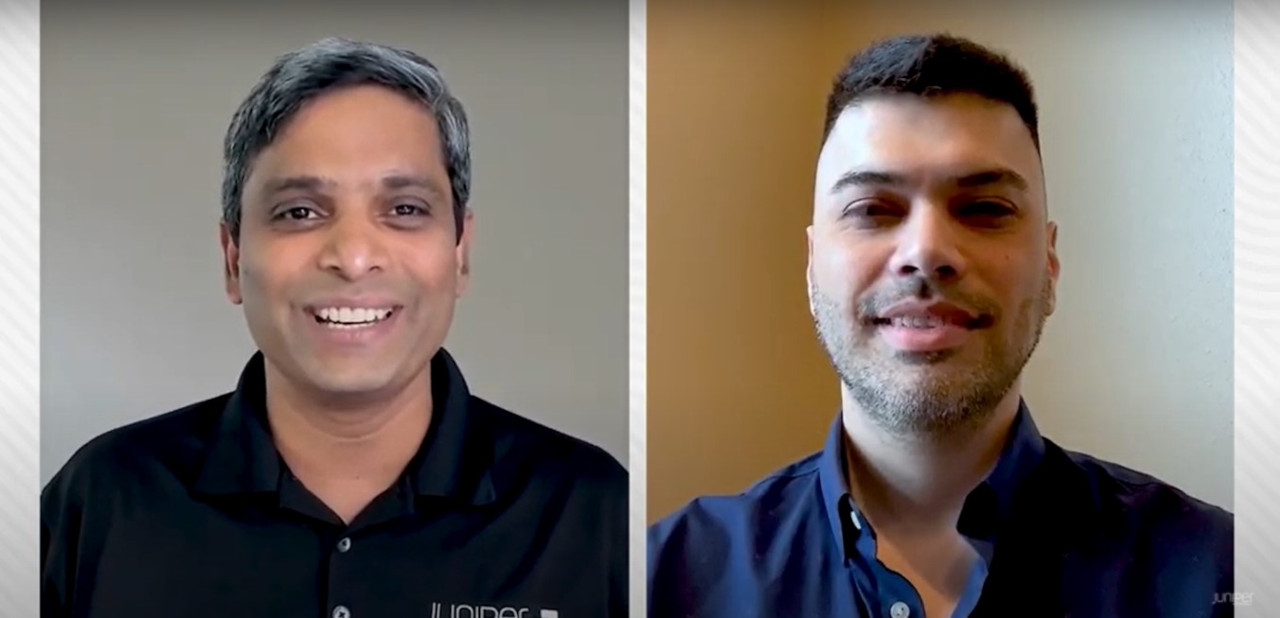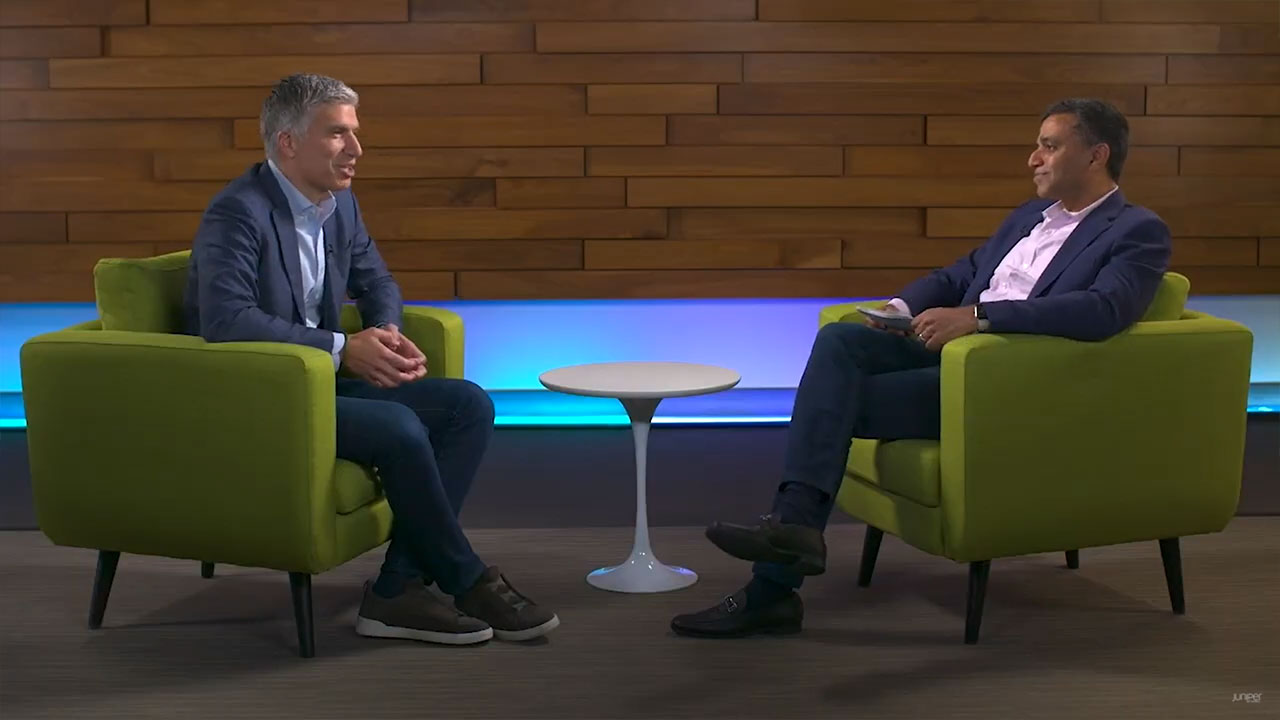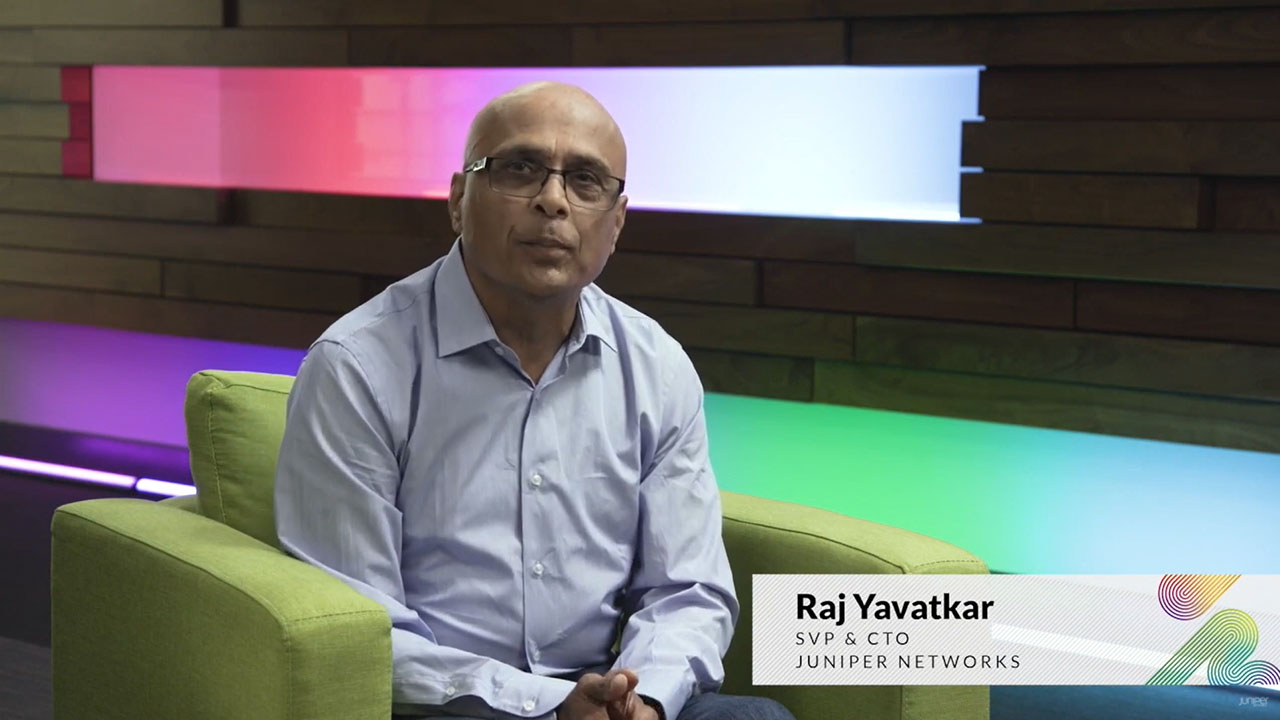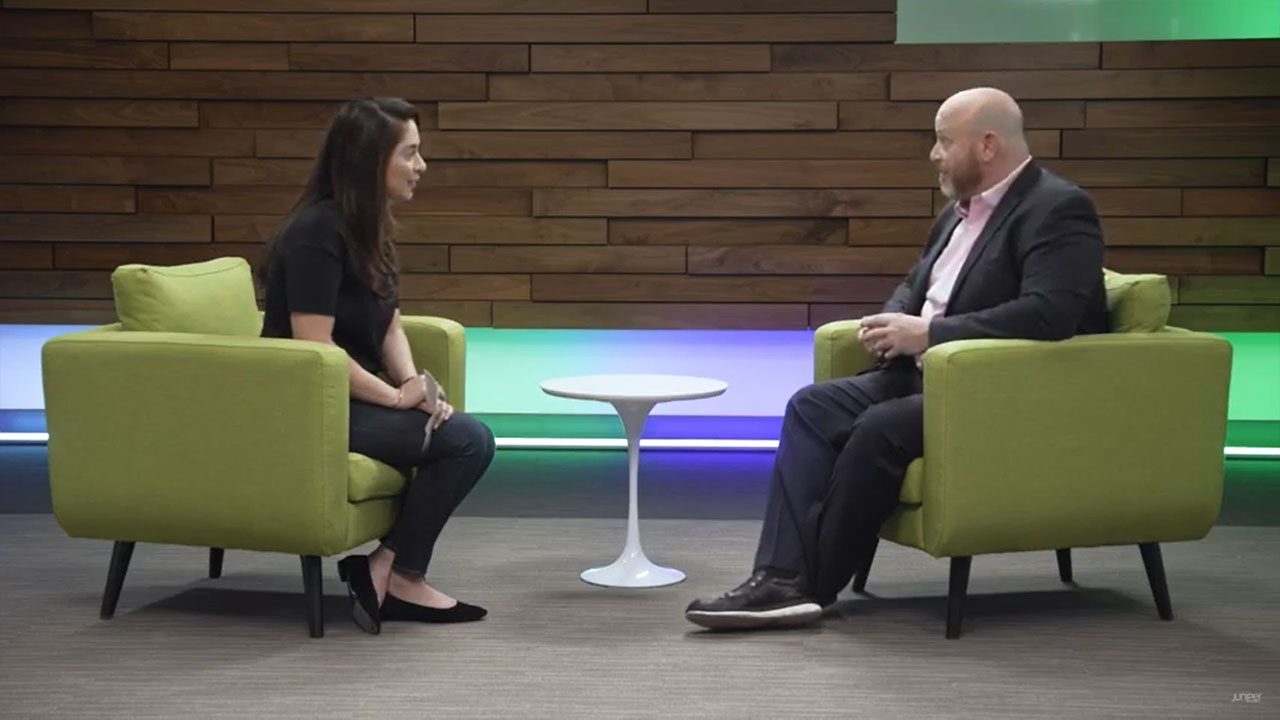Leveraging Automation for Reliable Data Center Operations | Juniper Global Summit 2022

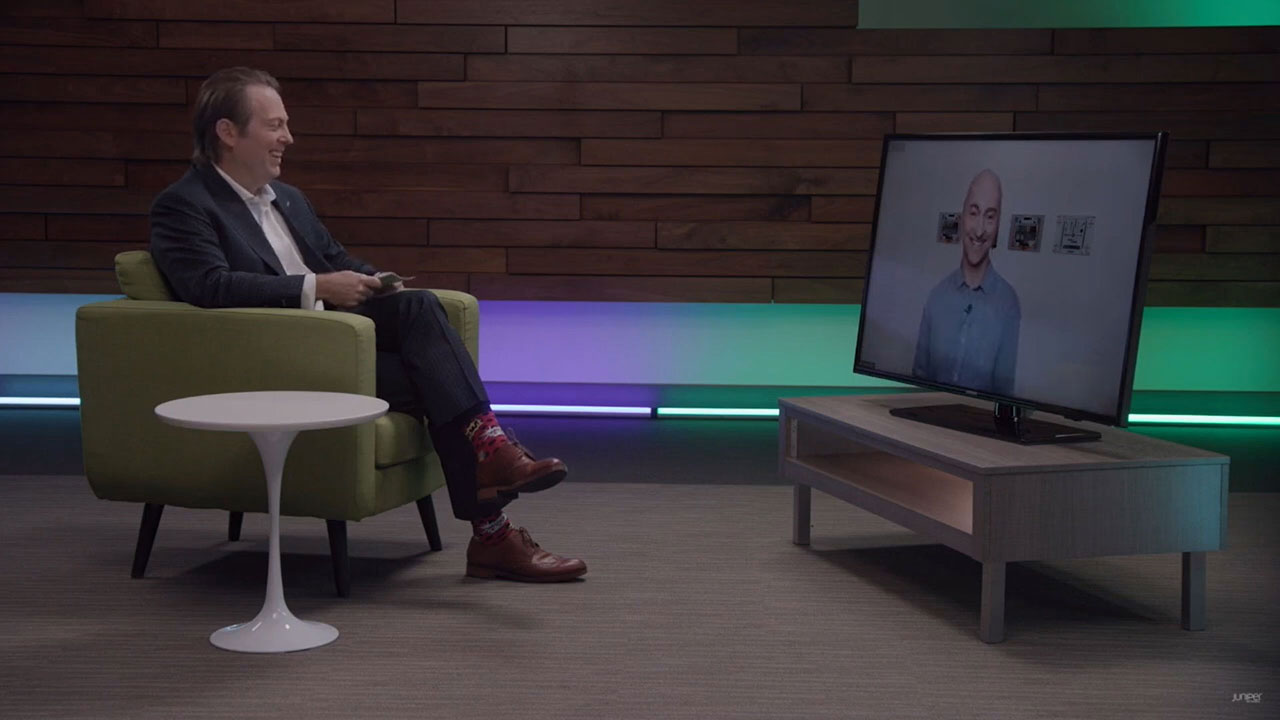
Intent based networking with 50 years of legacy
How do you build, manage and scale data centers in an established business? Learn from Ernest Altbart, of Austrian IT provider Raiffeisen Informatik, as he takes you on his journey of changing the mindset and parameters of building and managing data centers. Laying out his challenges and key learnings, he exposes how both design and operational benefits are achieved while resulting in better user and data operator experiences.
When it comes to managing people and solutions, two points Ernst addresses are the overwhelming pace of change and the generation gap in the networking era. Find out what steps were just too big to take when using architecture to mitigate enterprise risk. Not to mention, dealing with 50 years of legacy.
You’ll learn
What to consider when planning an environment that works today and in the future
Why the procurement department said Apstra made their dreams come true
The tangible benefits of automation
Who is this for?
Host

Guest speakers
Transcript
0:07 Hello everyone.
0:08 My name's Mike Bushong,
0:09 and I'm Vice President of Data Center Product Management at Juniper.
0:13 Today, we're going to talk about data center automation
0:15 and the benefits it brings to planning, design, and operations.
0:19 If done correctly, it maximizes both reliability and speed
0:23 resulting in better user and data center operator experiences.
0:27 Joining me today is Ernest Altbart, who's IT architect for Raiffeisen Informatik.
0:33 Ernest, welcome and thank you for joining us today.
0:36 Hi, Mike. Thanks for having me.
0:38 Before we get into data center operations and automation,
0:42 maybe you can tell us a bit about what Raiffeisen does.
0:46 We have been providing IT services for financial and insurance companies
0:50 for more than 50 years focusing on the content as well.
0:54 Not just the IT aspect, but also the business aspects of the services we provide and have,
0:59 of course, proceeded over 50 years
1:03 to various stages of services and up to now have become a full-blown
1:07 service provider for these institutions and on the vision on top of that,
1:12 of course, also a data center provider
1:14 and with along all the network elements that come along with the data center.
1:20 Perfect. With the network, you've got new elements of networking, as you imagine.
1:24 Tell us a bit about what Juniper does relative to your overall mission.
1:30 We have been deploying Juniper Solutions ever since 2010
1:34 where we started with the single SRX cluster.
1:36 In 2014, we have moved on to a service provider core as we call it.
1:41 It's a transmission network based on Juniper routers
1:44 and have recently upgraded our data center fabric
1:48 with the app store solutions and QFX switches.
1:52 We'll proceed over the next year also to implement an SD-WAN solution
1:56 by Juniper which we will use in our subsidiary networks.
2:03 That's the short story of a long run actually.
2:07 You hit a couple of things there.
2:08 You hit SD-WAN, we've obviously hit intent-based networking with the Apstra bits.
2:13 There's the trends that are going on.
2:14 Maybe you can talk a bit about what the drivers are behind
2:18 how you think about your data center evolving.
2:23 The main drivers from a business side are, of course,
2:27 the abstraction that customers demand.
2:31 You'll know about hyper-scaling clouds out there.
2:34 That's typically a level of demand that the customers now have.
2:39 They want private clouds, they want containerization,
2:42 they want infrastructure abstraction.
2:45 They don't want to push out orders anymore for certain
2:49 application-specific infrastructures,
2:51 but what they want is self-service aspects, portaling,
2:55 want to do it themselves, want to implement platforms,
2:58 not necessarily applications.
3:01 There's lots of things that are going about microservices and rapid deployments,
3:07 rapid changes in the application infrastructure
3:10 that can only be achieved by automation, by API integration.
3:14 That's the business side of things.
3:16 On the infrastructure, of course, you have to match that to a certain extent.
3:20 You have to have the ability to be flexible enough,
3:23 but to have a standardized operation on the same level.
3:26 Not that the feature parameters and issues actually overwhelm you in the end.
3:34 Keeping control and abstract at the same time,
3:36 I think that will be one of the main challenges we face
3:40 and that's one of the main drivers business-wise.
3:43 When it comes to the management side of things,
3:46 I think people are the main driver when it comes to implementing solutions
3:51 because the management aspect becomes more and more difficult
3:54 and becomes more and more complex even and complicated.
3:58 As I mentioned, a lot of parameters, lots of changes,
4:00 there's lots of things we have to keep under control and people in our industry,
4:07 as you might know, I guess, there's never enough of them.
4:13 In the networking area specifically, we,
4:16 at least in Europe see a huge problem coming up
4:20 when it comes to the generation gap in the networking area.
4:24 There's not many young guys coming after our seniors.
4:29 There is a huge demand for networking people on the general industry.
4:35 There's lots of competition going on.
4:37 There's people coming and going in all over the companies.
4:40 Luckily, this isn't the case in our company.
4:42 Raiffeisen Informatik is a very stable employer, but we do not get
4:46 all that many people on board for the reasons I just cited.
4:51 Therefore, you have to do more with the same amount of people.
4:55 The infrastructures, the applications get more complex,
4:57 get more complicated, and it's really,
4:59 really of utmost importance to keep control of your infrastructure.
5:05 When you look at a standard VPN, your excellent fabric as it is today,
5:09 there's lots of parameters to be configured all the time
5:12 and to be kept in control of all the time with the same amount of people,
5:17 with the same sizes of teams doing more is, of course,
5:22 a major challenge when it comes to implementing something new
5:26 and on top of your current infrastructure.
5:29 I would say those two would be pretty much the main drivers
5:33 amongst many others for our business.
5:36 You mentioned the word overwhelm.
5:37 When you look at the pace of change, starting with cloud and then,
5:43 things like Automation, DevOps, Cloud Native, Kubernetes,
5:49 just the pace of change is crazy.
5:50 It's hard to imagine individuals working in the environment,
5:54 not being overwhelmed.
5:56 Looking to tools and processes to help, I think it's a huge challenge.
6:02 Just on the people side, staying there, you talked a bit about folks
6:06 being recruited away, you talked about the risk of bringing in
6:11 juniors when you've got folks who've been there for a while
6:14 and change in skillset.
6:18 From an individual perspective, even beyond the business,
6:21 can you talk a bit about what challenges your people are seeing
6:24 just in terms of how they operate things.
6:26 How are they facing all of this overwhelming change?
6:31 Of course, one way of coping with that, is standardization.
6:36 Standardize as much as you can.
6:38 That's one way of doing it.
6:39 Automation is key, as well, because once you standardize,
6:43 you have a very good base for automation, and you can easily do that.
6:48 Of course, there is insight necessary all the time.
6:51 There is a thing of keeping the control over the standards you
6:56 created and the automation layer you have put in place, whatever that is.
7:01 That needs to be something you can easily rely on all the time
7:04 and not worry about it because once you do that,
7:08 you just created an additional problem for you and didn't solve one in the first place.
7:13 From an individual point of view, we had funny discussions, actually,
7:18 in the selection of our data center fabric management solution,
7:23 which has been always Apstra.
7:25 When we approached our senior administrators who have been doing
7:30 their networking job for the last 25 years, most of that, of course
7:36 manually over a very long time, even they looked at the length of parameters,
7:44 at the number of parameters,
7:46 at the problem of being able to control all that in a very short amount of time.
7:54 Even they said, "Well, okay, in that case, we need to go for automation."
7:58 I can very clearly see that.
8:00 That was a milestone in our selection process as then but the mindset has switched.
8:08 We looked for automating more or less exclusively,
8:12 and more or less disregarded the traditional configuration aspect of the components.
8:17 This is where you guys can come in, actually.
8:21 Along those lines, obviously, data center fabrics, EVPN plays a big role.
8:25 Maybe we can get a bit more into some of the specifics
8:28 as you're talking about the things that people have to manage relative to EVPN.
8:32 You already referenced that there's a whole set of parameters that
8:35 people have to pay attention to, to keep current and adjust
8:39 continuously as the data centers operating.
8:42 Maybe we can talk a bit about the challenges inherent to managing
8:46 broad EVPN-type environments.
8:48 First of all, like I said that the sheer number of parameters
8:52 is something that you need to take into account.
8:56 The use, the intent you have with that fabric, what are you doing with it?
9:02 What are you connecting it to?
9:05 I might mention there that we have a 50-year legacy and that there's a
9:09 whole lot of traditional data center that also needs to be
9:11 connected to newer fabric of sorts.
9:15 This is where a whole new set of feature comes in.
9:19 Of course, keeping all that is a major challenge.
9:23 Intent is one thing but keeping it is a totally different thing.
9:28 That's difficult to achieve, I might add.
9:33 I'd say that also integrating and interfacing is a huge challenge
9:39 and will be a huge challenge in that regard.
9:42 We try to tackle that by running a two-sided approach.
9:47 We target the network automation on the one hand and target the rest of
9:52 the data center automation on the other.
9:55 We purposefully didn't integrate the software-defined data center
9:59 as we currently deploy it and the network fabric, as we thought that
10:03 might be too big a step at this point in time because once you do
10:08 it all at the same time, it becomes additionally difficult.
10:12 Those, I would see are the main challenges and, in the future,
10:15 of course, then the integration will be of utmost importance.
10:19 I mentioned SD-WAN earlier which has similar approaches,
10:23 then you have the network fabric,
10:25 you have a software-defined data center of sorts depending on your stack,
10:29 and managing all those together,
10:31 getting an abstraction for the network layer,
10:33 that's especially important for cloud interconnect and stuff like that.
10:38 Those will pose, I think challenges on a company, on an organizational,
10:42 and on an individual base because keeping track of all that alone is
10:47 a challenge in and of itself.
10:50 It's crazy on a complexity that creeps in, even in short periods of time.
10:54 You mentioned something I want to call attention to.
10:57 You said 50 years of legacy that we have to deal with,
11:01 that's unimaginable for most of us.
11:04 Along with that, obviously, it's not just changing technologies,
11:07 there is different generations of equipment, there's different
11:11 generations of companies and suppliers,
11:14 and that means that your environment
11:15 is going to naturally be or arrive at multi-vendor.
11:19 Maybe we can talk a bit about this vendor independence and the role
11:24 it plays because you're planning an environment that has to not just work today,
11:29 but it's got to continue to work as things change.
11:32 Can you talk a bit about how vendor independence--
11:35 How you think about that and even plan for it?
11:39 Vendor independence is always something my companies have strived for in the past.
11:45 Usually by dispersing vendors over certain solutions say storage,
11:50 for instance, there's a couple of storage providers we employ of course,
11:55 that gives you at least strategic options once something happens
11:59 to one or the other suppliers that has happened in the past,
12:02 but being vendor-independent also gives you, of course,
12:05 a lot of assurance when it comes to the
12:08 standardization and automation I mentioned earlier.
12:11 This is one aspect why we always strive for vendor independence
12:17 as we didn't want to be dependent from one of these vendors.
12:23 There's a funny story, actually, I should mention here.
12:26 Our purchasing department, as you might imagine, is one of the,
12:30 if not the strongest driver of being vendor-independent because it gives
12:34 them leverage to do their job well.
12:38 When they can compare offers, when they can compare RFPs,
12:41 when dealing out RFIs, they can very easily compare
12:45 and actually set the best price and the best solution based on that,
12:48 given all the technical requirements are met.
12:52 Once, we did employ the Apstra mechanic here and showed them that
12:58 now we can actually change
13:02 the hardware vendor underneath the solution if you want.
13:06 They were like, yay, that's what we always dreamt of.
13:09 It was basically their dream come true.
13:12 I have to add, this is, of course, still a dream but it is more
13:17 realized now with that Apstra solution than it was in the past
13:23 and any other management solution
13:26 we have seen and deployed in any area, in any field.
13:30 This is something they really, really liked.
13:33 That was interesting to get that feedback in the RFP process.
13:37 That was a major plus point for a management solution like Apstra here,
13:42 that we could abstract the hardware manufacturer
13:46 from the software management stack.
13:49 That's just one funny side aspect of that
13:53 but maybe worthwhile for the purchasing departments.
13:57 On the technical side of things, of course,
13:58 it gives you an independence and an assurance of you
14:01 can continue to manage your infrastructure in much the same way as you did before,
14:05 even if you have to change the vendor.
14:08 There was an actual application already for that.
14:11 You of all people are well aware of that chip crisis that's going on.
14:16 We have felt the effects of that
14:18 where we usually have delivery times of 6 to maybe 12 weeks.
14:23 All of a sudden it has become the same amount in months.
14:27 When dealing out our RFP,
14:29 we actually said to every manufacturer that was on the shortlist.
14:32 We said, "If you can deliver sooner,
14:36 let us know because it might be the decisive factor here."
14:39 It might actually swing the decision your way
14:42 because we knew when we had a solution like Apstra in place,
14:47 we could actually do that.
14:49 It changed nothing from the way we are going to manage our data center fabric tomorrow.
14:55 It was just a different hardware underneath with maybe a little screw
15:00 and a little tinkering here and there
15:02 when it came to the configurer or sort of stuff like that.
15:04 We simply didn't worry about that.
15:06 We had a shortlist of the-- fine.
15:09 Whoever can deliver first, good.
15:11 Luckily, it was Juniper who delivered first because that gave us--
15:16 through the acquisition of Apstra gave us a strategic advantage
15:19 when it came to the ecosystem of the solution because when it comes to support lines,
15:24 contract management, contacts like you have here,
15:28 it, of course, is a huge advantage to have that in the same environment
15:32 and with the same content and with the same channels.
15:36 In the RFP itself, we actually could discount
15:39 the hardware manufacturer and that is a huge advantage.
15:42 I think that's also inherent in the solution
15:46 and that's really something we valued but luckily didn't have to act upon.
15:54 Using architectural means to mitigate enterprise risk is huge.
15:59 I don't know that I've ever seen a celebratory procurement team but it's nice doing that.
16:05 This was the first for me too.
16:08 Maybe we can take it just one step further.
16:11 There is an architectural principle and a reason for going in the direction, I guess.
16:15 What are the results of that?
16:17 Have we seen operational tangible benefits that
16:22 really drive Raiffeisen's infrastructure going forward?
16:25 Yes. I pointed it out earlier.
16:27 I'd say that the main advantage is we can now keep the intent.
16:34 Intent-based networking sets an intent first,
16:37 which is all nice and well, but keeping it is a major advantage for us.
16:42 As you might imagine, with 50 years of legacy and three data centers,
16:47 we run a broad base of customers in financial and insurance companies,
16:54 lots of demands, lots of flexibility needed.
16:57 When you have standardization in place,
17:00 it disperses quite quickly with customer demand.
17:04 Being able to keep the intent is I think the main advantage here for us.
17:12 I'd say that, of course, the deployment is a lot nicer,
17:20 a lot easier than it has been in the past.
17:23 Though, given the application lifecycle, this never was a deciding factor for us.
17:28 It's never a KPI in Raiffeisen.
17:31 How fast the switch is deployed,
17:33 but it's very, very nice that it just takes a day and it's done as compared to the past.
17:41 There's that, and of course,
17:44 there is visibility and of course that the ability to train people
17:50 has become much quicker than it has before.
17:54 Imagine you have to take somebody through Junos, IOS,
17:59 and other networking operation configuration courses.
18:02 All you have to do now is actually tell them how to work with Apstra.
18:08 You can disregard to a certain amount,
18:10 the actual hardware and operating system knicks
18:14 and knacks as there is that abstraction.
18:17 That's the top three that come to mind or fairly quickly here
18:22 when it comes to the actual advantages.
18:27 I'd say also as I mentioned it earlier,
18:29 the changing of the mindset is a side advantage that has huge effect in the future,
18:36 I think because when you change from,
18:39 "I have to configure a switch manually and via a command line,"
18:43 and then change to, "I'm setting a template,
18:46 I'm setting an intent and then I'll let the system deal with it,"
18:50 that's a different story that works differently from an operational point of view,
18:55 and it works differently from a designer point of view.
18:57 It actually changes your mindset.
18:59 We have seen effects like that,
19:01 as I pointed out with our senior administrators earlier.
19:05 They now think differently than they did two years ago.
19:10 I appreciate you sharing the journey.
19:13 I look at the journey you've been on and look at
19:16 what you've accomplished and what you all have achieved.
19:18 For many, your rearview is the future for what other people are doing,
19:23 and so I appreciate you sharing how you've gotten to where you're going.
19:26 I'm excited to participate in the journey going forward.
19:29 Thanks for the time today and I look forward to continuing the partnership.
19:33 Thanks, Mike. I sure am privileged.



























